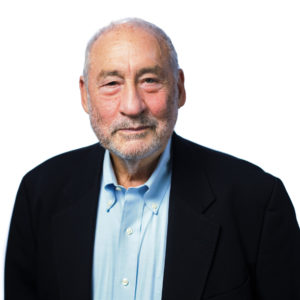The High Health Costs of TPP’s “Free Trade”
March 28, 2016
By Joseph Stiglitz
This brief is part 5 in a series on the Trans-Pacific Partnership. Click here to view the rest of the series.
Despite protests from industry lobbyists who are upset that they did not get everything they wanted, big pharmaceutical companies are some of the biggest winners in the Trans-Pacific Partnership (TPP). This supposed “free trade” agreement between the United States and 11 countries in the Americas and Asia would enshrine expansive monopoly protections for intellectual properties that shield drug makers from competition and provide them with new powers to challenge government decisions aimed at managing health care costs.
A win for Big Pharma here will leave virtually everyone else worse off, with their higher profits coming at the expense of higher health care costs for consumers and taxpayers, avoidable deaths and suffering, and health innovations being brought to market at a slower pace.
In order to maximize public welfare, intellectual property rights (IPRs) must strike a balance between providing incentives for innovation and enabling their widespread dissemination so people can benefit from and build on new ideas and technologies. Since past knowledge is the most important input to the production of new ideas, more restrictive IPRs actually restrain opportunities for future innovation. Patents are part of innovation systems in all countries; however, both recent and historical economic evidence shows that patents with varying degrees of strength have little relationship to measures of innovation, investment, or economic performance. In other words, patents are not the only way to incentivize research and development.
Nowhere is it more imperative to get the IPR balance right than in the health care field. The 1984 Hatch-Waxman act struck the right balance, saving U.S. consumers, employers, and taxpayers more than $100 billion per year with lower-cost generic medicines. Since then, pharmaceutical firms have developed new policy devices to claw back their monopoly protections and are advancing these policies in trade agreements. TPP would lock these in place in the U.S. and export them to other countries, tipping the IPR balance for all TPP partners as well as countries outside the bloc.
First, TPP will require countries to implement measures that allow “evergreening” of monopoly protections that prevent the introduction of low-cost generic treatments to the market. TPP achieves this by requiring signatory countries to grant new 20-year patents for new uses of old medicines or for trivial alterations of existing medicines. For example, if a drug that is dosed four times a day is reformulated to be dosed once a day, this would qualify it for an additional 20 years of monopoly protection.
Second, one of the most controversial issues in TPP negotiations focused on “biologic” medicines developed through biotechnology rather than chemical synthesis that offer cutting-edge treatments to some of our most pressing health problems. The question was whether the companies that develop these drugs should get even more monopoly rights in addition to their patents and for how long. The final TPP deal did not include the 12 years of biologics market exclusivity that U.S. negotiators and the Pharmaceuticals Research and Manufactures of America lobby had demanded—a period the Federal Trade Commission found unjustifiably long and that exceeded the standard President Obama sought in three successive budget proposals. However, for at least five years, the TPP would prevent regulatory authorities from authorizing the sale of the biologics equivalent of generics: biosimilars. Regulatory approval of biosimilars would rely on a competitor’s safety and efficacy data even if a biologic drug were not under patent. This would raise prices and limit access to such medicines for people in all TPP countries.
Third, stronger IP rights are not the only TPP measures that privilege Big Pharma over the public interest. The agreement places constraints on the ability of national health care authorities and programs to develop lists, or “formularies,” of preferred treatments that qualify for reimbursements based on evidence of their therapeutic efficacy. TPP would give drug and medical device companies new rights to influence the Center for Medicare and Medicaid Services’ decisions on what to include in such lists. Health authorities will be required to duly consider not only therapeutic value but the “operation of competitive markets” in deciding which treatments to cover, regardless of whether better or more cost-effective treatments are available. This leaves open the door for slick marketing to create demand for a product, even if it is not medically efficacious. Indeed, the whole purpose of formularies is to limit the market power of the drug companies and ensure that the government pays for the most effective and cost-effective treatments.
Finally, with health as with other areas of concern, TPP’s problematic investment chapter opens a new, broad range of public policies to challenge from foreign investors. Under TPP, investors can demand cash rewards if they think government actions violate the new investor rights granted by TPP and diminish their expected profits. Intellectual property rights and government “authorizations” are explicitly listed among the “covered investments,” meaning pharmaceutical firms could use investment disputes to attack national health authorities’ formulary decisions and slow regulatory approvals of medicines.
It is not surprising that negotiations so heavily influenced by lobbyist interests produced an agreement with such one-sided benefits. What is most surprising is that President Obama is making TPP the legacy of his last term in office when it so obviously risks the signature achievement from his first term: bringing down the cost of and expanding access to health care.
